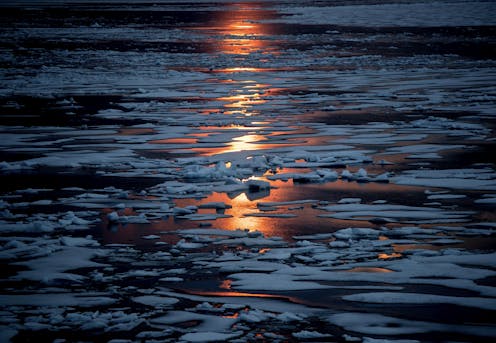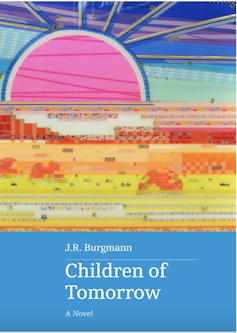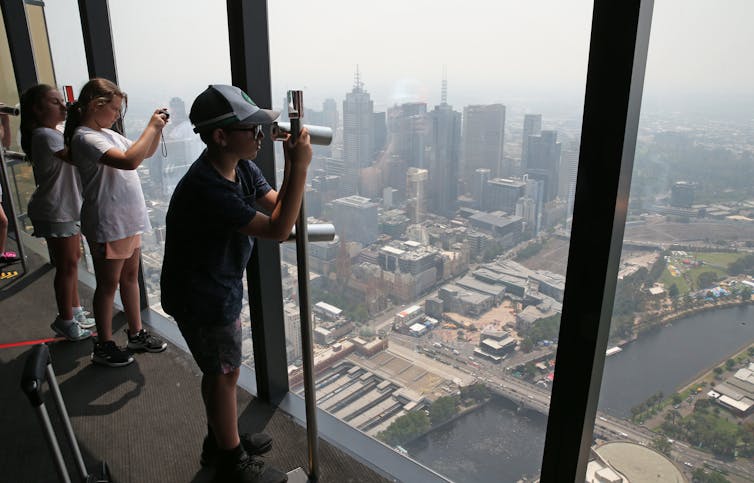
For at least the past decade, writers and critics have been debating the capacity of literary fiction to represent the realities of climate change. Some argue fiction is one of our best tools for reckoning with a world transfigured by anthropogenic warming. Others believe traditional narrative modes are unable to properly engage with the scale of the catastrophe: they are too anthropocentric, too domestic, too local.
Review: Children of Tomorrow - J.R. Burgmann (Upswell)
J.R. Burgmann’s debut novel, Children of Tomorrow, nods to the latter argument through its epigraph, a passage from Richard Powers’ The Overstory. Ray, bed-bound after a stroke, chastises himself for indulging in the consolations of fiction:
To be human is to confuse a satisfying story with a meaningful one, and to mistake life for something huge with two legs. No: life is mobilised on a vastly larger scale, and the world is failing precisely because no novel can make the contest for the world seem as compelling as the struggles between a few lost people.
In Children of Tomorrow, Burgmann tests this proposition. At its core is “a few lost people” but their struggles are placed in a narrative that ranges across the 21st century, as the world increasingly loses the contest against climate devastation.
Burgmann’s academic work concerns the genre often known as “cli-fi”, literature that depicts climate change and crisis. His novel draws from many examples of this mode, name-checking writers Margaret Atwood, James Bradley and Kim Stanley Robinson. The novels of these masters of speculative climate fiction are by mid-century regarded by one character as “old realisms no one heeded”.

Children of Tomorrow is a classic example of “cli-fi”, showing what we can expect if we fail to lower carbon emissions. But it is also engaged by questions of the form’s efficacy and function.
When we meet them in 2016, the novel’s small cast of characters are millennials, “children of the age of infinite growth”, committed in various ways to averting total climate catastrophe. There is Arne Bakke, borne of a long line of Tasmanian loggers but now studying trees and rewilding, and Evie Weatherall, a dynamic British woman in Australia to study marine science.
After falling in love, Arne and Evie move from Melbourne, a city on fire, to London, a city that in some not-too-distant future floods catastrophically.
Evie’s cousin Wally is a celebrity in the true 21st century sense of the word: he is a sometime climate journalist, sometime musician, a style influencer, a popular Twitter personality. The group of friends is rounded out by Arne’s brother Freddie, who begins as a “shredded poster boy for global environmental activism” but ends an eco-terrorist; John, a First Nations philosopher, and Kim, a Korean woman researching green cities.
Later in the century, the group expands to include Arne and Evie’s children, Jasmine and Raphael, “children of Greta” who despise their Millennial forebears’ failure to avert the disaster they must live through.
Children of Tomorrow is split into three parts, Century’s Beginning, Century’s Middle, Century’s End. This places it within a growing suite of novels by authors such as David Mitchell and Annie Prouix that engage with the history of humanity’s impact on the earth through longer-than-usual timespans. Mitchell’s Cloud Atlas (2004) and Prouix’s Barkskins (2016) are chunky novels. Children of Tomorrow is a relatively brisk 259 pages. Its style is episodic rather than epic, the narrative unspooling through a series of loosely connected scenes and encounters.
This fragmentary quality is intensified by Upswell’s decision to use line breaks instead of indentations to mark paragraphs in its books. The overall effect is disorientation and rupture, meaning the reading experience resembles the characters’ attempts to navigate a world made increasingly strange by climate crisis.
Read more: Can 'cli-fi' actually make a difference? A climate scientist's perspective
Telling not showing
Author Amitav Ghosh has famously argued that the realist novel’s devotion to observation of character, emotion and ordinary events, summarised by the familiar adage “show, don’t tell”, has limited the form’s capacity to engage with the seemingly improbable fact of climate change and its outsize effects.
In line with this critique, Burgmann’s novel often tells rather than shows. Significant climate catastrophes are not directly narrated but mentioned after they occur, so the list of disasters grows as the novel continues: the Long Heat, an energy coup, “a season of asthma”, storm surges, sea level rise and poisoned oceans, Melbourne’s first 50 degrees day.

At times the technique can be jarring. A world-destroying cataclysm is recounted thus:
governments topple and systems once thought inviolable collapse. Displaced millions fall out into the ravening cavalcades, rolling across the Earth in search of their share.
This onslaught of destruction without extrapolation risks sacrificing one thing that the novel as a form does do well: empathy. What would it be like to be one of those “displaced millions”? What would it feel like to live through a 50-degree day?
But perhaps we should not expect from Children of Tomorrow what we might expect from a novel. In an early scene, Wally tells his friends he is working on a new project called the Climate Chronicle. He wants “to narrate what we’re doing to the planet”. “You want to write a novel about climate change?” Evie asks. “No”, Wally replies “emphatically”. He wants to create “something … sufficient.”
He wants to “chronicle” the crisis, create “a ledger, a witness statement of sorts”. If the novel is not a sufficient form, perhaps Burgmann intends his book to serve as a kind of climate chronicle: a record of a world that is not yet born but might be soon.
At its heart, though, Children of Tomorrow is a familiar story: Evie and Arne fall in love, they have children, and they raise those children.
The novel relies heavily on dialogue in interactions between Evie, Arne, their friendship group and their children, as a way of representing or retelling larger events and forces. Of course, there is nothing wrong with using a family to anchor a narrative about climate change, except the novel itself suggests our inability to care beyond ourselves and our loved ones is responsible, in part, for the crisis. Wally, for instance,
feels the warm glow of family, that peculiar kinfolk sense, a savannah sickness that imperils the planet. The real clan is one and greater, stretching back billions of years to a common root called life.
The novel deploys familiar narrative patterns even as it critiques them. This is a contradiction it struggles to resolve.
We have the technology …
There are other contradictions and elisions. There is a lot of witnessing of catastrophe in this book, but not a lot of engagement with the broader structural forces that bring it about. There is little sense that the characters’ actions — Arne’s rewilding, Evie’s marine science, Wally’s writing — matter at all, in the end. This comes close to what Andreas Malm calls the “reification of despair”, a response to the climate crisis that suggests there is little point struggling for a better future.
As its title would suggest, Children of Tomorrow is invested in the trope of children as hope. As catastrophe mounts we are reassured the “brave new children of this world are awakening”. But there are discomforting elements here too. The one child-free woman in the narrative, Kim, regrets that instead of “raising beautiful little beings, she had spent her life making beautiful things”.
This educated and engaged woman’s longing is so intense she spends her evenings using futuristic technology to simulate pregnancy and birth.
In another off-putting scene, Arne eats a piece of forbidden meat in front of his horrified grandchild, Jasmine’s daughter Aloy, who we are told is determined to go out into the world and help it recover. Encircling her upper arm with his hand, he remembers “how fat kids and teenagers used to be”. Only thin children, apparently, are the future. Burgmann deals with thorny issues in Children of Tomorrow, but thorny issues sometimes beget problematic writing.

I have always doubted the assertion (to return to Powers’ lines) that the world is failing because “no novel can make the contest for the world seem as compelling as the struggles between a few lost people”. To me this seems somehow both an enormous overestimation of the novel’s power and a grim underestimation of its true efficacy.
Novels aren’t responsible for the climate crisis and they probably won’t solve it, but there is still plenty they can do. At its best, the novel can make us feel for human and nonhuman lives unlike our own; it can bring us into contact with the world as it existed long before we were here and long after we will go. It can model careful thinking, critical analysis, complex processes of cause and effect — all of which we need more of if we are to save ourselves.
For those reasons, I’m not quite ready to transcend the novel in the way Burgmann suggests we must.
By the middle of the 21st century, Wally’s Climate Chronicle becomes a “multimedia megahit”, a digital interface that augments how users see the world.
Wally describes it as a “bridge between data and emotion”, and at one point the characters use it to rewind the world in real time. They “look back through the centuries: towers rising and falling, people coming and going, the Earth changing rapidly”.
We don’t need this technology because we already have it. It is called the novel.
Meg Brayshaw does not work for, consult, own shares in or receive funding from any company or organization that would benefit from this article, and has disclosed no relevant affiliations beyond their academic appointment.
This article was originally published on The Conversation. Read the original article.







